Dispersions & Resins
Flexo+Tiefdruck magazine 2/2021:
How to combine sustainability and performance with today’s water-based inks for flexible packaging
Few people realize just how many advancements water-based ink technology has made in the past few years. Now, we can justifiably say its performance is comparable to solvent-based systems. Three pioneers in water-based ink – raw material supplier BASF, ink maker Follmann and equipment manufacturer SAUERESSIG – explain why water-based inks have what it takes to become the leading solution for film printing.
The largest plastics user in Europe is the packaging industry. Almost 40% of the 50.7 million tons of plastics produced are for this use (see Figure 1). This is only set to grow: with an increasing global population, smaller households and more specialized products, our plastic demand will increase significantly in the coming years.
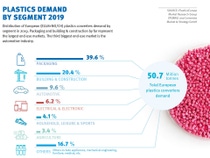
There are many projects in the packaging value chain focused on improving sustainability and efficiency: moving from multi-layer laminates to monomaterial, exploring the use of paper-based flexibles, and improving end-of-life options (reduce, reuse, recycle).
But every element of packaging contributes to its impact, and nothing should be neglected. This includes the right choice of ink. In paper-based packaging, water-based inks have been established as a safer and more sustainable technology for decades. But around 90% of plastic-based flexible packaging is still printed with solvent-based inks. That’s about to change. Significant leaps in water-based technology make it possible to print on film substrates with water-based inks, maintaining a similar level of quality – and cost.
BASF, SAUERESSIG and Follmann have joined together as part of the cross-industry PRETHINK INK network, whose mission is to spread knowledge and raise awareness about water-based ink technology. In this article we will take a deep dive into the latest technology in resins for water-based inks, what it means in terms of ink properties and ink handling, and how equipment suppliers can get the most out of this technology.
Water-based resins for film printing: How they work
Recent developments in resin chemistry have made water-based printing on non-absorbent substrates a viable industrial process. In particular, the combination of rheology-controlled (RC) acrylic emulsions with self-crosslinking technology has been a major step forward compared to traditional acrylic dispersions. RC emulsions provide outstanding resolubility and printability through the presence of alkali-soluble, low-molecular-weight acrylic resins (ASR). These resins are known to be present both at the surface of the polymer particles and in the water phase, resulting in near-Newtonian rheology of the wet ink during printing.
During ink drying and initial film formation, they move and form a membrane-like structure around the acrylic polymer particles. The resulting distribution of acid groups around the particles improves resolubility (see Figure 2A). The crosslinking reaction enables the formation of a robust, cohesive network in the dry ink layer by ensuring strong adhesion of the inks to various substrates and superior resistance properties (see Figure 2B). This also has a strong influence on the printing performance of the ink. If the reaction occurs too fast or too early – for example in the wet ink film – resolubility will be reduced, whereas if crosslinking is too slow, the dried ink layer can become tacky or turn out to have poor resistance properties. To achieve clean, sharp images over long print runs, it is crucial to maintain a good balance between resolubility and resistance.
Self-crosslinking technology is suitable for surface printing. In the case of reverse print lamination, water resistance properties are less important, but the conflicting chemistries of resin and (solvent-free) adhesive can impair bond strength and adhesion properties. Whereas acrylic self-crosslinking emulsions are preferred for surface printing with water-based inks, polyurethane dispersions (PUDs) have proven ideal for formulating water-based inks for reverse print lamination. PUDs are usually surfactant-free due to their stabilization mechanism. This improves adhesion properties and allows resolubility to be adjusted (Figure 2C). In addition, they combine a high solids content with low viscosity and low blocking properties.
The latest step in the evolution of water-based resin chemistry is the development of hybrid systems. These combine the superior elasticity and strength of PUDs with the printability and resolubility of acrylic emulsions. Acrylic monomers polymerize in the presence of a PUD ‘seed’ polymer, producing core-shell systems with unique properties (see Figure 2D).
Note: The paragraph “Water-based resins for film printing: How they work” has previously appeared in the Italian trade magazine “Converting. Packaging – Labeling – Cartotecnica”, issue 5/2018.
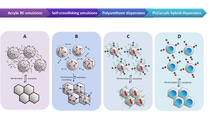
Improved ink systems and printability
Continuous improvements, as well as a change in perception among printers, brand owners and end users, have led to water-based inks gaining ground as a high-performance and environmentally friendly alternative to other ink systems.
In the course of further technical development, high-quality ink systems were developed for the main applications in the frontal printing area as well as in the composite area. Improved drying properties and optimized ink filming have paved the way for high production speeds and good optical and mechanical properties. The ink systems also ensure excellent printability in the halftone range with constant and low dot gain.
The composition of Follmann’s water-based printing inks for flexible packaging is the result of many years of research and development. Modern printing inks are diverse: they are based on aqueous binders of different chemical natures, from acrylate or styrene acrylate chemistry to polyurethane-based dispersions. Modern hybrid systems (PU acrylate) are also being used more frequently because they combine the advantages of acrylate and polyurethane chemistry. This makes it possible to realize more and more applications in the field of flexible packaging, with water-based as well as solvent-based inks, and to achieve comparably good properties in terms of adhesion, gloss, customer-specific COF values, sealability/resistance, laminability and resistance to aggressive substances such as acids, solvents and other chemicals.Other modern technologies used by binder manufacturers, such as self-crosslinking mechanisms in acrylate dispersions and polyurethane dispersions, are also being used more and more to meet the ever-increasing demands of the packaging sector. In addition to 1K systems, intensive research is being carried out on 2K systems for applications with the highest demands. Other aspects relating to water-based printing inks, such as suitability for direct or indirect food contact or biodegradability and recyclability, are also coming to the fore.
Other modern technologies used by binder manufacturers, such as self-crosslinking mechanisms in acrylate dispersions and polyurethane dispersions, are also being used more and more to meet the ever-increasing demands of the packaging sector. In addition to 1K systems, intensive research is being carried out on 2K systems for applications with the highest demands. Other aspects relating to water-based printing inks, such as suitability for direct or indirect food contact or biodegradability and recyclability, are also coming to the fore.
The formulation of modern water-based inks in cooperation with printing press manufacturers also enables reliable drying of the ink film, even at printing speeds of up to 600 m/min. Follmann’s selection of pigments is based on regulatory requirements and the desired or required color range to meet all demands for color strength and purity. The secret lies in the selection of binders, suitable pigments and the balanced addition of performance-enhancing additives, and of course the perfectly coordinated production process.
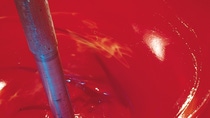
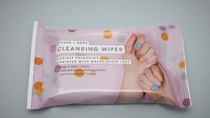
Improved tools for flexo and gravure printing
To achieve the highest possible print quality and color consistency with water-based inks, SAUERESSIG is constantly working on the further development and optimization of its printing tools. The topic of sustainability is steadily gaining in importance among international customers – both printers and brand owners.
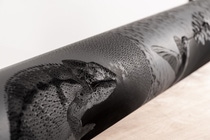.jpg)
To help these customers meet their targets, the flexo division – SAUERESSIG Elastomers – offers complementary sustainable printing forms when using flexible substrates and water-based inks. These forms have been specially developed in cooperation with material manufacturers and are tailored to the use of water-based inks. They are made of SBR materials (styrene-butadiene rubber) and are manufactured with a special surface treatment from SAUERESSIG. Compared to standard materials, they offer higher run stability and optimized ink transfer, with up to 40% more final density and a closed printing surface without pinholes. Experts have also noted positive effects when using a newly developed elastomer printing plate on all substrates, with excellent ink transfer and sharpness of detail. Ink usage in the printing process can thus be reduced and resources saved – without any loss in terms of print quality.
Another advantage is that the new materials are characterized by high wear resistance, which offers further benefits, particularly when dealing with rough substrates, fast printing speeds and long-run production. Thanks to the possibility of regumming old sleeves, the printing forms are not one-way products and are a real gain for customers and the environment in terms of sustainability.
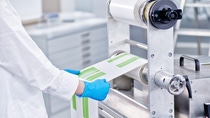
In gravure printing, too, printing tools are being adapted to the properties of water-based inks. It is primarily the cell geometries that have to be adapted: owing to the changed emptying and printout behavior of the ink, the cells become flatter and are given a larger opening area. In addition, due to the higher pigmentation and changed drying behavior of the ink, the gradations of the halftones are also adjusted to achieve optimum print quality. Checking the color values on the press is very important because this technology is still new to many printers. Digital systems and independent measuring methods can help here. The c.INKTEC Innovation Center from SAUERESSIG offers experts the possibility to test and optimize their tools flexibly, quickly and easily.
Conclusion
True sustainability cannot be achieved alone. In most cases, it requires collaboration across the value chain. Water-based ink technology is no exception: it grew into a viable solution thanks to multiple stakeholders from different steps in the value chain all contributing their expertise.
Now, multiple breakthroughs have come together – new resin product lines developed specifically for this purpose, R&D success in optimizing ink composition, clever adjustments in printing equipment – to take the performance levels of water-based technology way beyond what they were when these inks first entered the market. With careful change management and dedicated knowledge, printers and converters can enjoy the best results. That’s why BASF, Follmann, SAUERESSIG and many other partners joined PRETHINK INK: to share this knowledge and practical insight as widely as possible.
The authors

Christian Groh is Global Manager of c.INKTEC department and responsible and accountable to the ColorCloud Solution and c.INKTEC innovation laboratory at SAUERESSIG. He has over 13 years’ experience in the packaging and printing industry for the complete process from design to print. His functional experience includes driving the process from an idea of a color to a lab produced recipe and finally to a digital coloring standard to use at press.

Roland Geiselhart was appointed Director of the Print + Packaging business unit on 1 February 2020. In this position, the 60-year-old trained book printer and printing technician is primarily responsible for the domestic and international further development of water-based flexographic and gravure printing inks for the areas of tissue, flexible packaging (paper and board, aluminium and foil) and gift wrap.
Tjalle Hijlkema is Commercial Marketing Manager for the flexible packaging industry at BASF in The Netherlands. It is his target to support ink makers, printers and brand owners to make the whole value chain more planet and human safe. With his experience in the chemical industry and the support from the technical team, his goal is to make water-based inks the preferred solution for printing flexible packaging and make the market embrace this technology.

Martin Bek graduated in Denmark in 1985 for his Bachelor of Science, as Chemical Engineer. He joined BASF in The Netherlands in 2001 as Technical Marketing Manager - Printing & Packaging and has 35 years of experience in the printing and packaging industry with technical positions at various European ink producers and converters. He works closely with internal teams and resins customers along the full value chain to support and push the conversion from solvent-based inks to water-based inks for practically all packaging applications.
